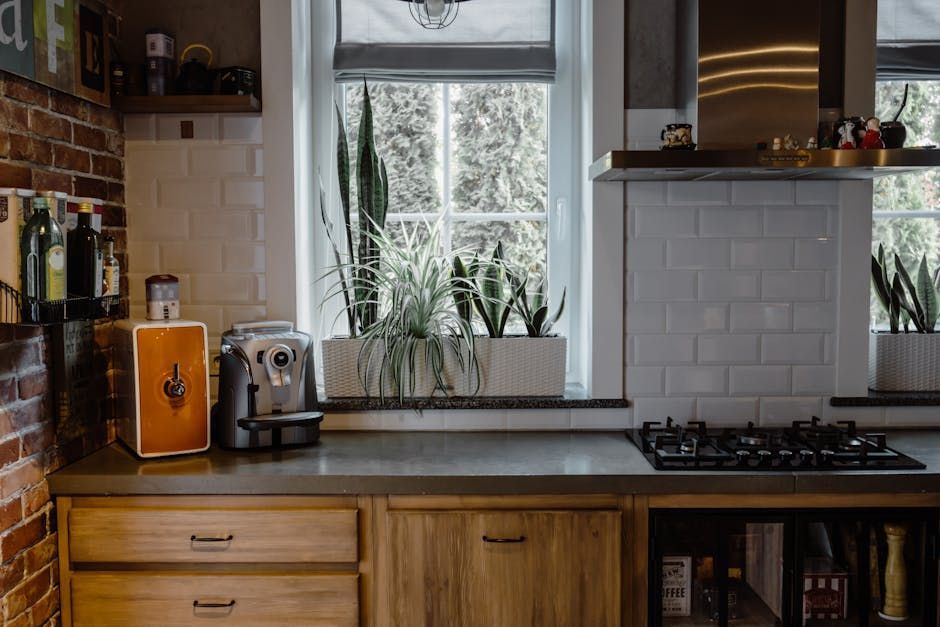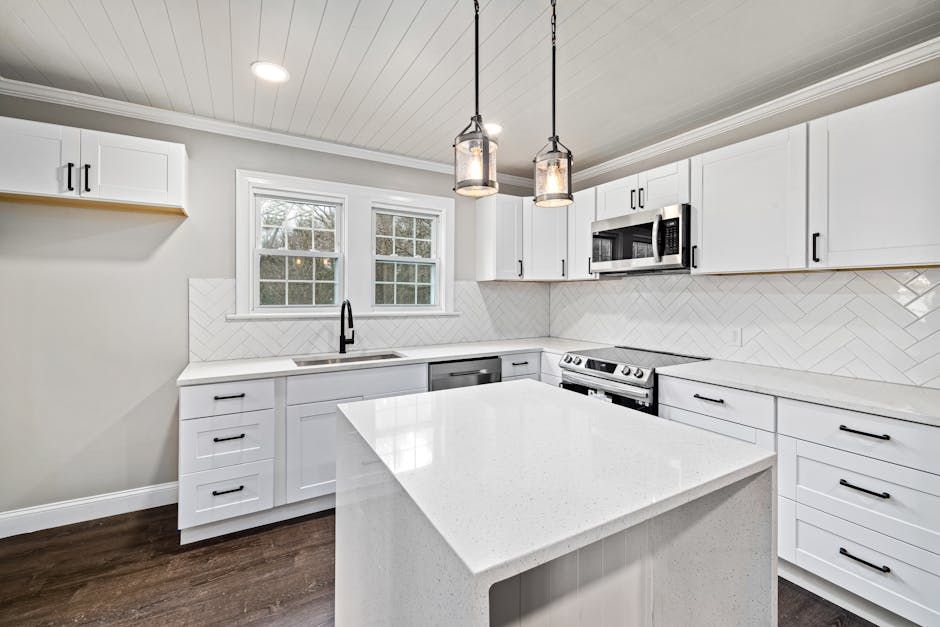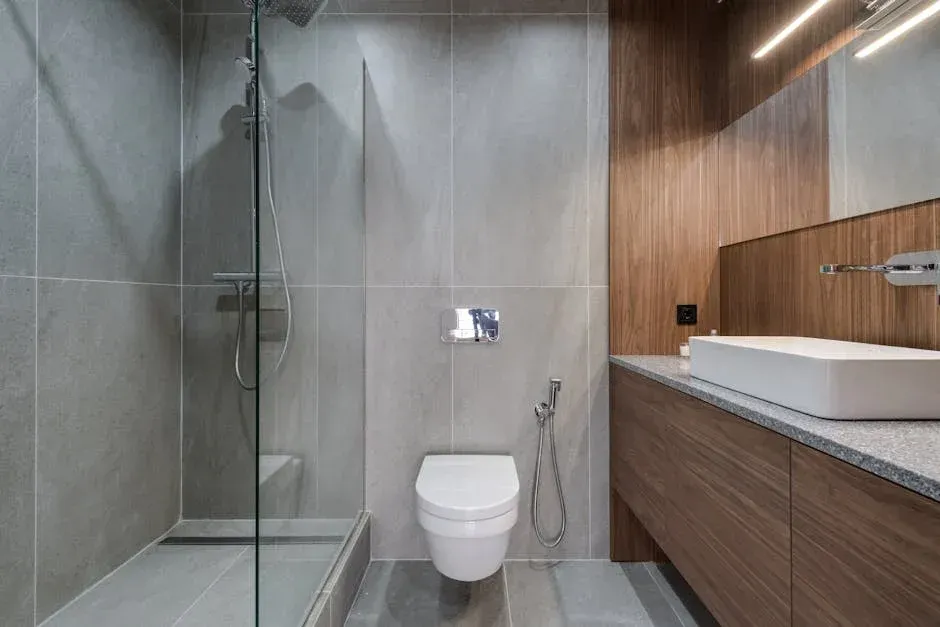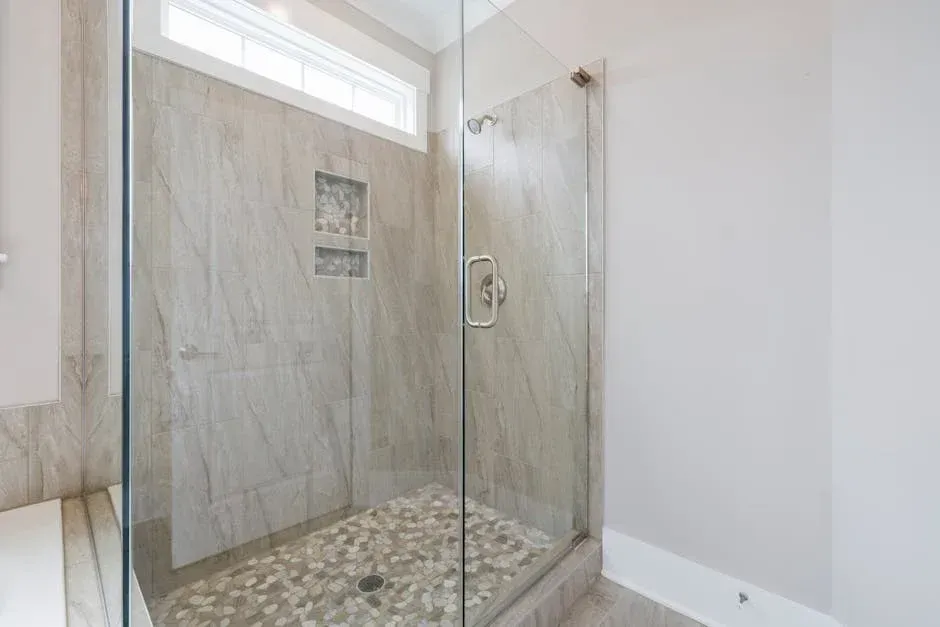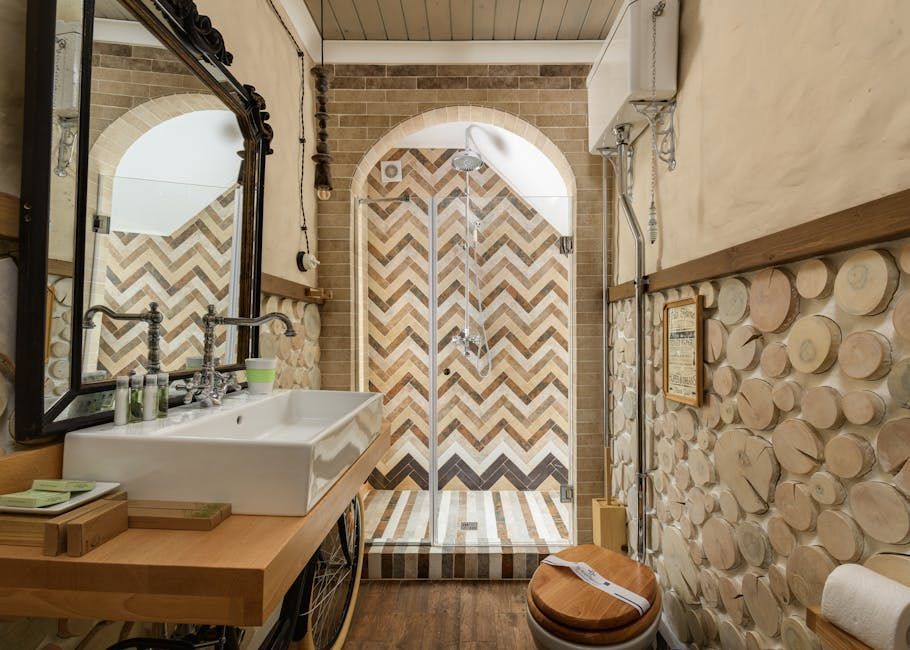Green Thumb: Transform Your Yard with Sustainable Landscaping
Changing Your Yard with Eco-Friendly Design
Sustainable landscaping ideas are practical approaches that conserve water, reduce maintenance, and support local ecosystems while creating beautiful outdoor spaces. Here are the top sustainable landscaping strategies to transform your yard:
- Native plant gardens - Require 80% less water and minimal fertilizers
- Rain gardens & water harvesting - Capture runoff and reduce irrigation needs
- Permeable hardscapes - Allow water infiltration and reduce flooding
- Reduced lawn areas - Replace with meadows to cut water use by 30-50%
- Strategic tree placement - Shade your home to reduce energy costs by up to 25%
- Composting systems - Recycle yard waste and enrich soil naturally
Where homeowners once installed resource-heavy, time-consuming landscapes, more people are now seeking designs that are both beautiful and environmentally responsible. Sustainable landscaping ideas focus on minimizing inputs like water, fertilizers, and maintenance while maximizing ecological benefits. This approach not only helps the environment but can significantly reduce your utility bills and yard maintenance time.
A well-designed sustainable landscape can increase your home's energy efficiency by up to 25%, saving on heating and cooling costs throughout the year. By incorporating native plants, efficient irrigation systems, and thoughtful hardscaping, you'll create an outdoor space that works with nature, not against it.
I'm Mike Martinez from Accountable Home Remodeling, and I've helped countless Denver homeowners transform their yards with sustainable landscaping ideas that improve both curb appeal and environmental responsibility. My team and I specialize in creating outdoor spaces that reflect your personal style while remaining kind to both your wallet and our Colorado ecosystem.
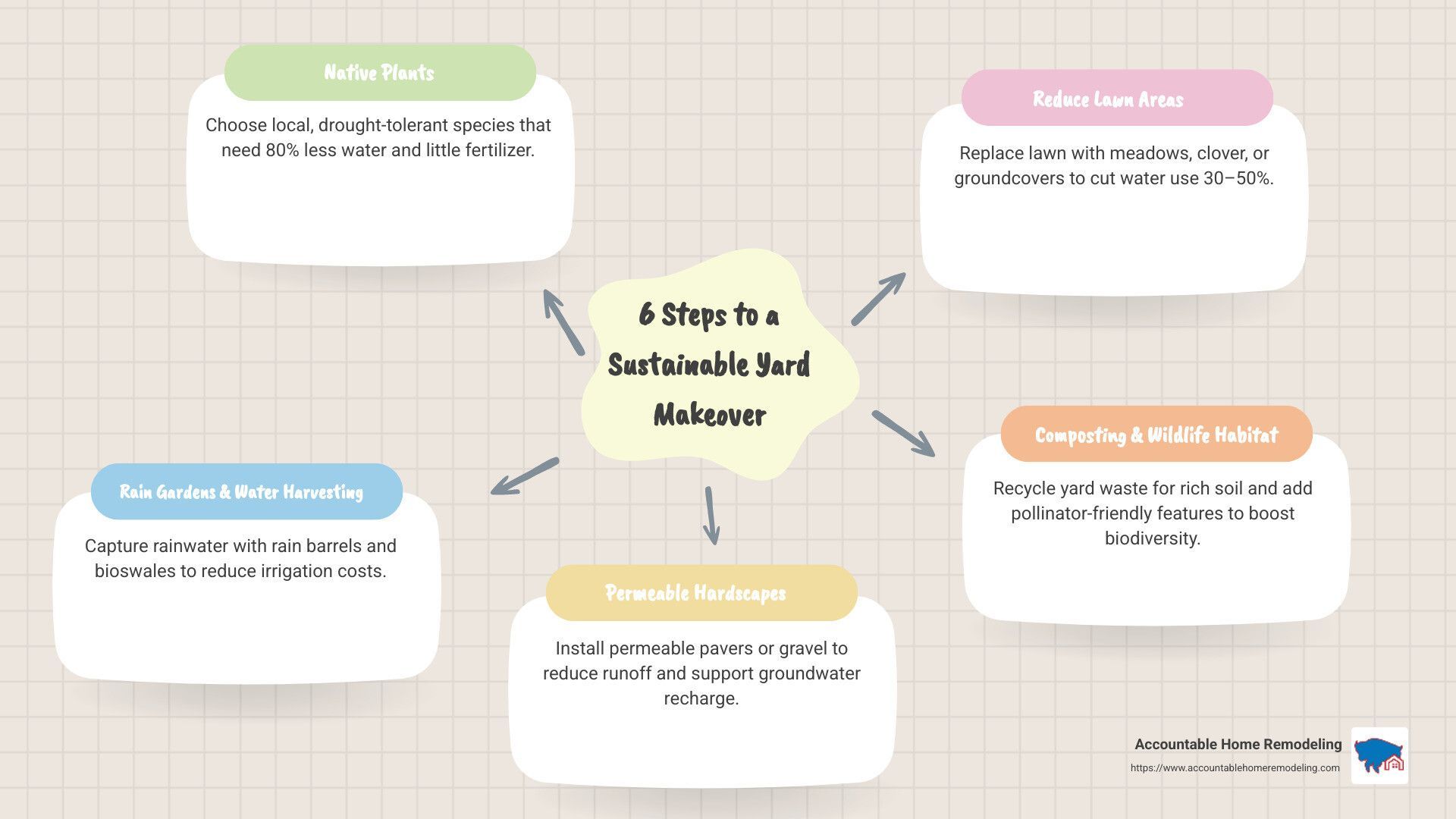
What Is Sustainable Landscaping & Why It Matters
Picture a yard that thrives without guzzling water or demanding constant attention. That's the essence of sustainable landscaping – an approach that works with nature rather than against it. As Denver landscape designer Evo Sadosky puts it, "Sustainable landscaping is an eco-friendly approach that minimizes water, pesticides, fertilizer, labor, materials, and maintenance while maximizing ecological benefits."
At its heart, sustainable landscaping creates beautiful, functional outdoor spaces that tread lightly on the environment. Instead of fighting Colorado's natural conditions, these landscapes accept them – and the benefits are remarkable.
Water savings alone make a compelling case. Here in Colorado's semi-arid climate, sustainable landscapes can reduce outdoor water usage by 30-75% compared to conventional yards. That's not just good for the environment – it's great for your water bill too.
Your home's energy efficiency also gets a boost. With thoughtful placement of trees and shrubs, you can create natural shade that cuts summer cooling costs by up to 25%, while strategic windbreaks can reduce winter heating needs by 10-25%. It's like nature's own HVAC system!
The environmental benefits extend even further. Waste reduction happens naturally when you leave grass clippings in place and compost yard trimmings. Air quality improves as plants filter pollutants and you reduce the need for gas-powered equipment. Local wildlife finds food and shelter in native plantings that support everything from butterflies to birds.
Perhaps most appealing for busy homeowners is the lower maintenance requirement. Well-designed sustainable yards simply need less of your time and energy for mowing, pruning, fertilizing, and other care. And when extreme weather hits – whether drought, flooding, or temperature swings – these landscapes show remarkable climate resilience.
While the initial setup costs may be comparable to traditional landscaping, the long-term savings are substantial. Water bills shrink, replacement costs diminish, and maintenance expenses drop significantly over time.
How "Sustainable landscaping ideas" differ from traditional yards
The fundamental difference between sustainable and traditional approaches isn't just about plant choices – it's a completely different philosophy. Traditional yards often prioritize a certain look, regardless of what it takes to maintain it. Sustainable landscaping ideas work with natural processes instead of fighting against them.
Think of traditional landscaping as a constant input-output system. You're regularly adding water, fertilizer, and new plants while generating waste. Sustainable landscapes function more like nature's own closed-loop systems. Rainwater gets captured and used right where it falls. Plant trimmings become mulch or compost. Leaves decompose in place to feed the soil. Plants spread naturally through self-seeding.
Soil health becomes a priority, not an afterthought. In conventional yards, soil is often treated merely as something to hold plants in place. In sustainable landscaping, the soil ecosystem itself is nurtured. Organic matter gets continuously added. The vital soil microbiome is protected rather than disrupted by chemicals. Mulch shields the soil structure from erosion and temperature extremes.
The plant selection philosophy shifts dramatically too. Rather than choosing plants primarily for looks regardless of their ecological fit, sustainable landscaping ideas prioritize natives and adapted species that thrive in local conditions. Plants with similar water and light needs get grouped together. Diverse plantings provide multiple ecological functions – not just beauty, but also food for wildlife, erosion control, and shade.
The financial picture looks different over time as well. Traditional landscapes might have lower upfront costs but demand higher ongoing expenses. Sustainable yards may require more thoughtful planning initially but typically cost significantly less to maintain. Water bills shrink, fertilizer purchases diminish, and plants need replacing less often. The energy savings from strategic plantings add up year after year.
As landscape architect Falon Mihalic wisely notes, "Local stone lasts a lifetime. You will not have to send it to a landfill ever, because it can be reused again and again." This thinking – choosing durable, natural materials that can be repurposed indefinitely – exemplifies the sustainable approach.
At Accountable Home Remodeling, we've helped countless Denver homeowners transform their outdoor spaces with sustainable landscaping ideas that balance beauty with responsibility. The result? Yards that look stunning, support local ecosystems, and demand less of your time and money – a true win-win for you and the environment.
Top 6 Sustainable Landscaping Ideas That Pay Off
Changing your yard with sustainable landscaping ideas isn't just good for the planet—it's great for your wallet too. I've helped countless Denver homeowners create outdoor spaces that are both beautiful and environmentally responsible, and these six approaches consistently deliver the best returns on investment. Let's explore how you can make meaningful changes that benefit your home, your budget, and our Colorado ecosystem.
Idea #1 – Go Native & Drought-Tolerant
There's something magical about plants that naturally belong in our region. When you accept native and drought-tolerant species in your landscape, you're working with nature rather than fighting against it.
Here in the Denver Metro area, our semi-arid climate presents unique challenges—from occasional drought to dramatic temperature swings. Native plants have evolved alongside these conditions for thousands of years, developing remarkable resilience along the way.
The benefits speak for themselves. Native plants typically require up to 80% less water than their non-native counterparts once they're established. They need minimal fertilizer, less pruning, and rarely suffer from pest problems that plague exotic species. Plus, they provide essential food and habitat for local birds, butterflies, and beneficial insects that help keep your garden in balance.
"Native plants typically require no supplemental irrigation or fertilizers and support local biodiversity," explains Denver landscape designer Amy Whitworth, something I've seen in my projects throughout the Front Range.
For your Colorado garden, consider beautiful natives like blanket flower, purple coneflower, and yarrow for perennial color. Serviceberry and sumac make excellent native shrubs, while blue grama and buffalo grass offer drought-tolerant lawn alternatives. For ground cover, creeping thyme and various sedums thrive in our challenging conditions.
One approach I often recommend is creating designated planting zones—an oasis zone near your house where you can enjoy some higher-water plants, a transition zone with moderate-water species, and a xeric zone in outlying areas with extremely drought-tolerant plants. This hydrozoning strategy helps optimize your irrigation efficiency while still giving you a diverse, beautiful landscape.
As landscape designer Ari Tenenbaum notes about native plantings: "I would estimate this meadow will use about 30 to 50 percent less water annually, as compared to a traditional lawn." That's significant savings on your water bill while creating a more interesting, vibrant outdoor space.
Idea #2 – Capture Every Drop with Rain Gardens & Harvesting
In Colorado, water is precious. One of my favorite sustainable landscaping ideas involves capturing rainfall rather than watching it run down the street. Rain gardens and harvesting systems transform what would be wasted runoff into a valuable resource for your landscape.
A rain garden is essentially a shallow planted depression designed to collect stormwater from your roof, driveway, or patio. These beautiful features filter pollutants from runoff, reduce flooding and erosion, replenish groundwater, and create habitat for birds and butterflies. They add visual interest to your landscape while performing an important ecological function.
Amy Whitworth, a landscape designer I've collaborated with, explains it perfectly: "Rain gardens help purify surface water and recharge groundwater, which is important for salmon-safe gardening in the Pacific Northwest. Cleaner water leads to healthier rivers and watersheds, which is better for all wildlife and people."
Creating an effective rain garden isn't complicated. Position it at least 10 feet from your foundation, size it to roughly 20-30% of your drainage area, and excavate to a depth of 4-8 inches. Use a soil mix of approximately 60% sand, 20% compost, and 20% topsoil, and select plants that can handle both wet and dry conditions—perfect for Colorado's variable weather.
To complement your rain garden, consider rainwater harvesting. A typical 100-square-foot section of roof can yield about 60 gallons of water per inch of rainfall in a connected rain barrel. That's valuable moisture you can use during dry spells. Just remember that in Colorado, regulations allow most single-family homes to collect rainwater in up to two rain barrels with a combined capacity of 110 gallons.
For properties with slopes or large paved areas, bioswales—linear channels designed to manage water flow and filter pollutants—can be another effective solution. These features slow water movement, allowing more time for infiltration while preventing erosion.
Idea #3 – Permeable Hardscapes Over Concrete
Traditional concrete patios and driveways create impermeable barriers that prevent rainwater from soaking into the ground naturally. The result? Increased runoff, erosion, and pollution of local waterways. But there's a better way.
Permeable hardscapes offer beautiful alternatives that allow water to infiltrate the soil while providing the solid surfaces we need for outdoor living. I've installed these in dozens of Denver homes with fantastic results.
The options are surprisingly diverse. Permeable pavers create attractive patterns while allowing water to flow through the gaps between units. Porous concrete or asphalt looks similar to conventional materials but contains tiny voids for water penetration. Gravel paths provide excellent drainage at an affordable price point, while stepping stones set in sand or gravel create charming walkways that let rain soak through.
"We always opt for stone patios set in decomposed granite, which allows water to be absorbed into the soil below," explains landscape designer Evo Sadosky. This approach creates beautiful, functional spaces that work with natural systems rather than against them.
Beyond water management, permeable surfaces offer additional benefits my clients love. They absorb less heat than conventional concrete or asphalt, making your outdoor spaces more comfortable in summer. Better drainage means fewer icy patches in winter—a significant safety advantage in Colorado. Plants adjacent to permeable surfaces receive more natural water infiltration, and many systems naturally filter contaminants from runoff.
For an even more sustainable approach, consider reusing materials. Broken concrete ("urbanite") can be repurposed as stepping stones or retaining walls. Reclaimed brick creates character-rich patios with a story to tell. Salvaged stone offers unique textures and colors while keeping beautiful materials out of landfills.
As David Hoxsie, a landscape designer who incorporated reclaimed materials into a project, notes: "It was a balancing act of wanting to create an inviting, finished space while embracing the aged, imperfect character of the site." That imperfect character often becomes the most charming aspect of the finished landscape.
Idea #4 – Create Wildlife & Pollinator Havens
Creating spaces for wildlife is among the most rewarding sustainable landscaping ideas I've implemented for Denver homeowners. As natural habitats continue to shrink due to development, our yards can become crucial refuges for birds, butterflies, bees, and other beneficial creatures.
The benefits extend beyond good environmental stewardship. Pollinator-friendly landscapes support essential ecosystem services, increase your garden's productivity through improved pollination, reduce pest problems through natural predator-prey relationships, and add beauty through colorful visitors. Perhaps most importantly, they create a deeper connection with nature for you and your family—something we could all use more of.
To create an effective wildlife habitat, focus on providing four essential elements: food, water, shelter, and nesting sites. For food sources, include native flowering plants that bloom in succession from spring through fall, ensuring a constant nectar supply. Add trees and shrubs that produce berries or seeds, and don't forget host plants for butterfly caterpillars (like milkweed for monarchs).
Water features needn't be elaborate—even a simple bird bath makes a difference. For shelter, plant dense shrubs where birds can hide from predators, and consider leaving areas of your yard a little "wild" with brush piles or unmowed sections. Nesting sites might include birdhouses, areas of bare soil for ground-nesting bees, or perennials left standing through winter for insect hibernation.
As landscape consultant Noelle Johnson wisely advises: "The majority of plants can easily handle some damage from insects without seriously affecting the health of the plant. When you first spot damaging insects in your garden, usually within a couple of weeks beneficial insects will show that will eat those bad bugs." This natural balance is the essence of a healthy ecosystem.
I often recommend designating a portion of your yard as a "wild zone" where nature can take its course with minimal intervention. Even a small 10×10 foot area can support surprising biodiversity. Layered planting—combining trees, shrubs, perennials, and groundcovers—creates diverse habitat niches that support a wider range of creatures, mimicking natural ecosystems and providing resources at multiple heights.
Idea #5 – Shrink the Lawn with Eco-Friendly Alternatives
The traditional American lawn has become a resource-intensive monoculture that offers little ecological value while demanding constant attention. Reducing lawn areas is one of the most impactful sustainable landscaping ideas I recommend for conserving water, reducing maintenance time, and supporting biodiversity.
Native meadows transform lawn areas into beautiful, low-maintenance landscapes that support pollinators and other wildlife. These plantings typically use 30-50% less water than conventional lawns while requiring minimal mowing—usually just once per year. The visual impact is stunning, with wildflowers creating waves of color throughout the growing season.
For Colorado homeowners looking for lawn alternatives that can handle some foot traffic, several groundcover options work beautifully. Clover stays green with minimal water and actually improves your soil by fixing nitrogen. Creeping thyme releases a wonderful aroma when stepped on and thrives in our sunny climate. Buffalo grass, a native to the Great Plains, requires 50-75% less water than Kentucky bluegrass while maintaining a lawn-like appearance.
Ornamental grasses create movement, texture, and year-round interest in the landscape. They require minimal water once established and need cutting back just once annually—typically in late winter. Their beautiful fall colors and winter structure add interest to your garden during seasons when traditional lawns lie dormant.
For extremely low-water areas, rock gardens combine drought-tolerant plants with decorative stone to create visual interest with minimal maintenance. They thrive in challenging, sunny locations and can incorporate local stone for authentic regional character. The excellent drainage these gardens provide is perfect for specialized plants that might struggle in heavier soils.
Perhaps my favorite lawn alternative is edible landscaping—replacing unproductive turf with food-producing plants. Raised vegetable beds, herb gardens, berry patches, fruit trees, and edible groundcovers like strawberries or creeping thyme provide beauty and bounty. There's nothing quite like stepping outside to harvest dinner ingredients from what was once just mowed grass.
As garden writer Jane Purnell humorously notes: "You've been bitten by the eco-bug—and your landscape is patient zero. Scratch your eco-friendly itch with these design ideas." I love that perspective—making positive changes can indeed be contagious!
Idea #6 – Reuse, Recycle & Save Energy
Sustainable landscaping accepts the principles of reuse and recycling, turning potential waste into valuable resources while strategically designing to save energy. This approach adds character to your outdoor spaces while reducing environmental impact—a win-win I've helped many Denver homeowners achieve.
Incorporating salvaged materials adds unique character while keeping items out of landfills. Repurposed stone, brick, and concrete create beautiful patios and walkways with instant character and history. Reclaimed lumber transforms into raised beds, benches, or pergolas with a warmth new materials can't match. Even old metal gates or garden art can become distinctive focal points in your sustainable landscape.
As one designer noted about a project using salvaged materials: "It was a balancing act of wanting to create an inviting, finished space while embracing the aged, imperfect character of the site." That imperfect character often becomes the most beloved aspect of the finished landscape.
Strategic tree placement can significantly impact your home's energy efficiency—something particularly important in Colorado's climate of hot summers and cold winters. Plant deciduous trees on the south and west sides to shade your home during summer, while allowing winter sun to pass through when leaves drop. These properly positioned trees can reduce cooling costs by 15-35%. For winter protection, evergreens on the north and northwest sides create windbreaks that can cut heating costs by 10-25%.
Lighting choices matter too. Replace conventional outdoor fixtures with LED or solar-powered alternatives. Use motion sensors and timers to minimize unnecessary illumination. At Accountable Home Remodeling, we specialize in Energy Efficient Lighting Solutions that complement sustainable landscapes while reducing your electricity bills. Upgrading to solar outdoor lighting alone can save between $91 and $146 annually.
A well-designed compost station transforms yard waste into valuable soil amendment—completing the natural cycle. Whether you choose a three-bin system that allows for different stages of decomposition, a tumbling composter for easy turning, or a simple leaf mold pile for fall cleanup, composting keeps organic material on your property where it belongs. The rich humus you create improves soil structure, water retention, and plant health throughout your landscape.
Even your lawn maintenance can become more sustainable through grasscycling—simply leaving grass clippings on the lawn after mowing. This easy practice returns nutrients to the soil, reduces fertilizer needs by 25-33%, and saves you the time previously spent bagging clippings. For maximum sustainability, consider using manual or electric tools rather than gas-powered equipment, which can produce as much pollution in an hour as 11 new cars.
These sustainable landscaping ideas don't just benefit the environment—they create more beautiful, functional, and enjoyable outdoor spaces while reducing long-term maintenance costs. It's an approach that pays dividends in multiple ways for years to come.
Maintenance Keys for Long-Term Success
A beautiful sustainable landscape isn't a "set it and forget it" proposition—but the good news is that maintaining your eco-friendly yard typically requires much less work than traditional landscapes once established. With the right approach, you'll spend less time fighting against nature and more time enjoying it.
Let's explore how to keep your sustainable landscape thriving through the seasons with minimal inputs.
Soil Health Management
Think of soil as the foundation of your entire landscape. Just as you wouldn't build a home on a weak foundation, your plants can't thrive without healthy soil beneath them.
Every 3-5 years, consider testing your soil to understand exactly what you're working with. This simple step prevents guesswork and over-application of amendments—you'll know precisely what your soil needs (or doesn't need). Many county extension offices offer affordable testing services that provide detailed recommendations.
When your soil does need a boost, opt for organic fertilizers rather than synthetic chemicals. These slow-release options feed the entire soil ecosystem, not just your plants. They release nutrients gradually, reducing the risk of runoff into local waterways, while improving soil structure over time. Your plants will develop stronger root systems and better resilience to drought and disease.
Mulching deserves special attention in a sustainable landscape. A 2-4 inch layer of organic mulch around your plants (keeping it away from stems and trunks) works overtime for you—conserving moisture, suppressing weeds, moderating soil temperature, and gradually adding organic matter as it breaks down. It's like having a hardworking garden assistant that never takes a day off!
Water Management
Even the most water-wise landscape needs proper irrigation management to reach its full potential.
I recommend performing an annual irrigation audit—it's simpler than it sounds! Check your system for leaks or broken heads, ensure you have proper coverage without wasteful overspray, and adjust run times based on the season and what your plants actually need. Proper pressure is crucial too—high pressure creates mist that evaporates before reaching plant roots.
Consider upgrading to a smart controller if you haven't already. These ingenious devices adjust watering based on local weather conditions and skip cycles during rainfall. Many Denver-area homeowners find their water bills drop significantly after installation, and local utilities often offer rebates that offset the purchase cost.
Deep, infrequent watering encourages plants to develop extensive root systems that can access moisture far below the surface. This approach creates drought-resilient plants that need less supplemental irrigation over time. As landscape designer Evo Sadosky notes, "Plants with deep roots can survive weeks without water once established."
Integrated Pest Management (IPM)
Rather than reaching for chemical solutions at the first sign of trouble, sustainable landscapes rely on a thoughtful, stepped approach to pest management.
Start with prevention—healthy plants with proper spacing and good air circulation naturally resist many pest issues. When you do spot potential problems, take time to accurately identify what you're dealing with. Many insects in your garden are actually beneficial predators that help control the true pests.
Establish reasonable thresholds for action. A few holes in leaves rarely impact plant health, and overreacting with pesticides often creates more problems than it solves. As landscape consultant Noelle Johnson wisely observes, "The majority of plants can easily handle some damage from insects without seriously affecting the health of the plant. When you first spot damaging insects in your garden, usually within a couple of weeks beneficial insects will show that will eat those bad bugs."
When intervention becomes necessary, progress from least to most disruptive methods: start with manual removal (hand-picking, pruning), then try physical barriers (row covers, sticky traps), followed by biological controls (beneficial insects). Reserve even the least-toxic chemical options as a last resort.
Pruning Practices
Sustainable pruning focuses on plant health rather than rigid aesthetics. Think of yourself as working in partnership with your plants rather than forcing them into unnatural shapes.
Use selective pruning to remove only what's necessary for plant health, structure, and safety. Timing matters too—pruning flowering shrubs after blooming preserves next year's flower buds. Most native plants look their best when allowed to follow their natural growth habits, requiring only occasional guidance from your pruning shears.
When you do prune, consider chipping or composting the debris rather than sending it to the landfill. This closed-loop approach keeps valuable organic matter on your property while reducing waste.
At Accountable Home Remodeling, we believe sustainable landscaping ideas work best when they complement eco-friendly home improvements. Learn more about our approach to Green Building Materials that can extend your sustainability efforts from yard to home.
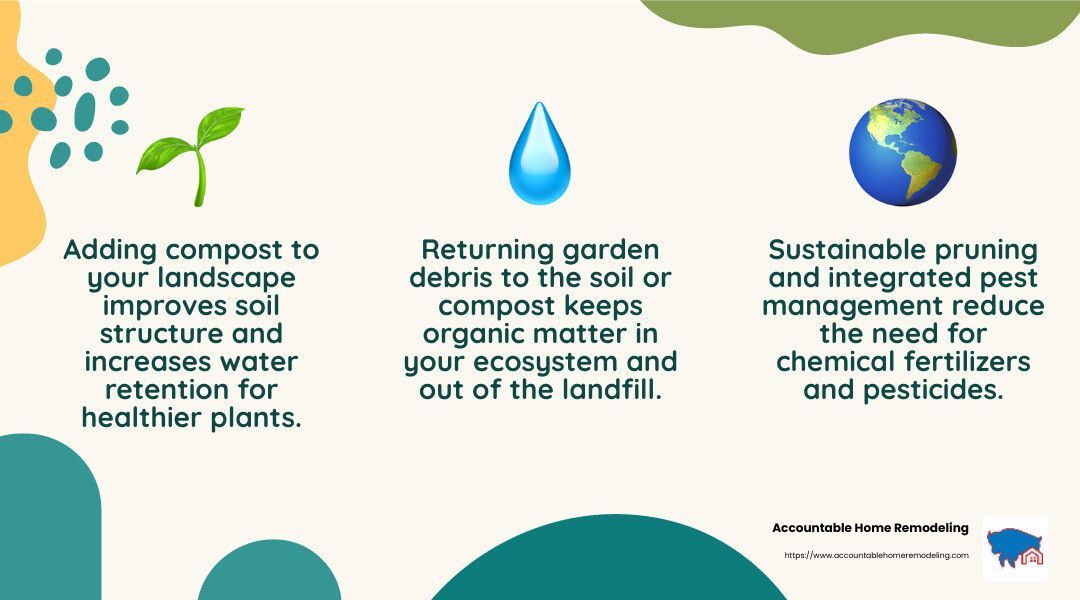
Scheduling your "Sustainable landscaping ideas" through the seasons
Maintaining your eco-friendly landscape is all about working with nature's calendar. Each season brings different opportunities to nurture your outdoor space while minimizing resource inputs.
Spring (March-May)
As Colorado emerges from winter, your landscape awakens too. This is the perfect time to prepare soil by testing if needed (every 3-5 years is sufficient) and applying about a half-inch to inch of compost to your garden beds. If your lawn areas have become compacted over winter, consider aerating to improve water and nutrient penetration.
Early spring is ideal for installing new native and adapted plants, giving them time to establish before summer heat arrives. It's also the perfect opportunity to divide and transplant existing perennials that have outgrown their spaces. Any bare areas can be seeded with appropriate grass or groundcover options.
Don't forget to give your irrigation system a thorough inspection before the watering season begins. Repair any damage from winter freezes, adjust your controllers for spring weather patterns, and clean out any rain barrels that have been sitting dormant.
Replenishing organic mulch in your beds (maintaining 2-4 inches) helps retain soil moisture as temperatures begin to rise. Just remember to keep mulch pulled back from stems and trunks to prevent rot issues. In vegetable gardens, compost makes an excellent mulch that feeds plants while suppressing weeds.
Summer (June-August)
Summer in Denver brings heat and often dry conditions, making water management your top priority. Rather than sticking to a rigid watering schedule, monitor soil moisture and water only when needed. When you do irrigate, water deeply and infrequently to encourage roots to grow downward. Early morning is the optimal time to minimize evaporation losses.
Adjust your mowing practices to match summer conditions. Keeping grass at 3-4 inches height shades soil, reduces water needs, and crowds out weeds naturally. Leaving clippings on the lawn (grasscycling) returns valuable nutrients to the soil and eliminates the need for bagging. During drought periods, consider mowing less frequently as growth slows.
Summer is also when pest issues typically emerge. Regular inspection helps you catch problems early, but remember to distinguish between truly harmful pests and beneficial insects. Most minor pest issues resolve themselves if you've created a balanced ecosystem in your yard.
Deadheading spent flowers encourages continued blooming in many perennials, but consider leaving some seedheads for birds and natural reseeding. Summer is also a great time to collect seeds from desirable native plants for expanding your garden next season.
Fall (September-November)
Fall brings cooler temperatures and often more predictable moisture. It's also the season of leaves—nature's bounty for sustainable gardeners! Rather than viewing fallen leaves as waste, treat them as a resource. Leave some in beds as natural mulch, shred excess leaves for compost or use as protective winter mulch. The landfill should be your last resort for this valuable organic material.
Fall is the perfect time to focus on your compost system. Turn existing piles to accelerate decomposition, add carbon-rich fall leaves to balance nitrogen-heavy summer materials, and screen finished compost for use throughout your garden.
For lawn areas, fall presents the ideal opportunity to overseed thin spots with an appropriate grass mix. A light application of compost as top dressing feeds soil microbes and improves structure. As temperatures cool, you can gradually reduce irrigation frequency.
Many experienced gardeners consider fall the best time for planting trees and shrubs. The combination of cooler air temperatures and still-warm soil encourages strong root development before winter dormancy. Divide overcrowded perennials and plant spring-flowering bulbs before the ground freezes.
Winter (December-February)
Winter offers a valuable opportunity to step back and evaluate your landscape's performance. Which areas thrived? Where might improvements be needed? Use this quieter season for researching new sustainable landscaping ideas and planning spring improvements.
The dormant season is ideal for pruning many deciduous trees and shrubs. Focus on removing dead or damaged branches and maintaining good structure and airflow. Clean, sharp tools make clean cuts that heal quickly.
Don't forget that your landscape provides crucial winter habitat for wildlife. Leave seedheads and ornamental grasses standing for both winter interest and food sources. Maintain bird feeders and ensure water sources don't freeze completely. Even simple brush piles provide valuable shelter during harsh weather.
Winter is also perfect for expanding your knowledge. Consider attending workshops on sustainable practices, researching native plants for spring additions, or connecting with local gardening groups to share experiences and ideas.
As landscape designer Stephanie Town wisely notes, "Planting with proper spacing will shade the ground, keeping it cooler and helping to minimize weeds. Plants that are too tightly planted can invite disease." This thoughtful approach to design and maintenance ensures your sustainable landscape will mature into a resilient, beautiful, and ecologically valuable outdoor space that becomes more self-sufficient with each passing season.
For more information about composting and its benefits in sustainable landscapes, check out this research from the Compost Foundation.
Frequently Asked Questions about Sustainable Landscaping
How much can I save on water and energy bills?
When homeowners ask me about the financial benefits of sustainable landscaping ideas, I love sharing the good news - the savings can be substantial!
Water bills typically see the most dramatic reduction. By swapping thirsty lawns for native plants or xeriscaping, my Denver clients regularly cut their outdoor water use by 30-75%. For a typical home, that translates to saving 10,000-30,000 gallons annually. At current Denver Water rates, you're looking at $50-$150 back in your pocket each year - and as water becomes increasingly precious in our region, those savings will only grow.
Energy savings might surprise you even more. Those strategically placed shade trees I recommend for the south and west sides of your home? They can reduce your cooling costs by up to 25% in summer. For a home with $200 monthly energy bills, that's potential savings of $600 annually. Add in the windbreak benefits of evergreens in winter, and your heating bills get a break too.
I remember working with a family in Lakewood who carefully tracked their utility bills before and after their sustainable landscape change. They were thrilled to document a 45% reduction in summer water use and a 15% decrease in cooling costs after just one year. As their trees and shrubs mature, those savings continue to grow.
The financial benefits extend beyond just utility bills, too. You'll spend less on gas for lawn equipment, fertilizers, and replacement plants. Many of my clients report cutting their yard maintenance costs in half. Plus, well-designed sustainable landscapes can boost your property value by 5-15% according to real estate studies - that's thousands of dollars of added value while you enjoy a more beautiful, functional outdoor space.
Are "Sustainable landscaping ideas" DIY-friendly or should I hire pros?
This is one of the most common questions I hear, and my answer is usually "it depends on your comfort level and the scope of your project." Many sustainable landscaping ideas are perfectly manageable for weekend warriors with basic gardening skills.
DIY-friendly projects include setting up rain barrels, creating small native plant gardens, building compost systems, and replacing small sections of lawn with groundcovers. I've guided countless homeowners through these projects with great success. One client started with just a 10×10 foot native plant garden and was so pleased with the results (and how easy it was) that she gradually expanded it throughout her yard over several seasons.
That said, some elements benefit tremendously from professional expertise. Rain gardens need proper sizing and grading to function correctly. Permeable hardscapes require specific installation techniques to maintain their drainage capacity. Irrigation system overhauls demand technical knowledge to maximize efficiency. And any project involving significant grading, retaining walls, or large tree installation should generally be left to the pros.
"Being upfront about your desire for sustainability from the beginning is very important," landscape designer Evo Sadosky wisely advises. A professional who specializes in sustainable approaches can help analyze your specific site conditions, create a comprehensive plan, select appropriate plants for your microclimate, and design efficient systems.
Many of my clients opt for a hybrid approach that works beautifully - they hire us to create a master plan and handle the technical elements, then implement certain features themselves over time. This approach gives you professional guidance while allowing you to roll up your sleeves for the parts you enjoy.
If you're considering the DIY route, start small to build confidence. Take advantage of local resources like Denver Botanic Gardens workshops or Colorado State University Extension classes. And remember, at Accountable Home Remodeling, we're always happy to discuss which elements of your sustainable landscape might work best as DIY projects and which might benefit from our expertise.
Will a sustainable yard attract pests or reduce them?
I hear this concern frequently, and I'm always happy to share what both research and my years of experience reveal: well-designed sustainable landscaping ideas actually reduce pest problems rather than create them.
The secret lies in biodiversity. Traditional landscapes, especially those dominated by lawns and a handful of ornamental species, create ecological imbalances where certain pests can thrive unchecked. In contrast, diverse sustainable landscapes establish natural checks and balances.
I worked with a client in Arvada who was initially worried that her new native garden would become a magnet for unwanted insects. After her first full season, she called me excited to report not only fewer pest issues than with her previous landscape, but also delightful regular visits from butterflies, hummingbirds, and beneficial insects she'd never seen before.
The pest control happens through several natural mechanisms. Native plants grown in appropriate conditions develop stronger natural defenses against pests and diseases - they're simply healthier and more resilient. Features like diverse flowering plants, shallow water sources, and varied habitats attract natural predators that control pest populations. Your garden becomes home to ladybugs munching aphids, birds eating caterpillars, and beneficial wasps targeting specific pest species.
"The majority of plants can easily handle some damage from insects without seriously affecting the health of the plant," explains landscape consultant Noelle Johnson. "When you first spot damaging insects in your garden, usually within a couple of weeks beneficial insects will show that will eat those bad bugs."
That said, a sustainable approach doesn't mean zero pests - rather, it means maintaining a healthy balance where damage remains at acceptable levels. You might see some insect activity, but rarely at levels that threaten plant health. Think of it as a functioning ecosystem rather than a sterile environment.
For specific concerns like mosquitoes, properly designed water features include movement or beneficial organisms that prevent breeding. Rain gardens are engineered to drain within 24-48 hours, preventing standing water issues. And while some wildlife is welcome, good design practices (like keeping dense vegetation away from foundations) discourage unwanted visitors like rodents.
The transition to this balanced approach sometimes requires a shift in perspective - learning to appreciate that occasional hole in a leaf as a sign of a functioning ecosystem rather than a problem requiring immediate intervention. When my clients make this shift, they not only enjoy fewer serious pest issues but also a deeper connection to the natural cycles happening right in their own yards.
Conclusion
Changing your yard with sustainable landscaping ideas creates more than just an environmentally friendly space—it's a smart investment that rewards you with lower maintenance needs, reduced utility bills, and a more enjoyable outdoor retreat. When we work with nature's systems rather than fighting against them, our landscapes become more resilient and beautiful with each passing season.
I've seen how native plant gardens bring a property to life with butterflies, birds, and beneficial insects that were previously absent. These natural ecosystems don't just look beautiful—they function beautifully too. Rain gardens and harvesting systems capture precious moisture that would otherwise run off, while strategically placed trees can dramatically reduce your home's energy consumption.
Here in Colorado, we face unique challenges that make sustainable approaches particularly valuable. Our semi-arid climate, unpredictable weather patterns, and increasing water restrictions mean that conventional landscapes often struggle to thrive. At Accountable Home Remodeling, we understand these local conditions intimately. We know which plants flourish in our soil, which materials withstand our temperature swings, and how to design outdoor spaces that complement both your home's architecture and your lifestyle.
What I love most about helping Denver homeowners implement sustainable landscaping ideas is seeing how these spaces evolve over time. Unlike conventional landscapes that often deteriorate without constant inputs, sustainable yards actually improve as plants mature and natural cycles establish themselves. The garden that requires weekly attention in its first year might need just monthly care by year three.
You don't need to overhaul everything at once. Many of our clients start with simple changes—perhaps a rain barrel or converting a small lawn area to native plants—and gradually expand their sustainable practices as they see the benefits unfold. Our background in home remodeling gives us a comprehensive view of how your indoor and outdoor spaces can work together to create a cohesive, sustainable living environment.
Ready to explore how sustainable landscaping ideas can transform your property? Our team at Accountable Home Remodeling is here to help craft outdoor spaces that balance beauty, functionality, and environmental responsibility. We proudly serve homeowners throughout Broomfield, Westminster, Thornton, Northglenn, Arvada, Boulder, Denver, Longmont, Aurora, and Lakewood with personalized solutions that reflect your unique vision.
Learn more about our services and find how we can help you create an outdoor space that's as sustainable as it is stunning. Your yard deserves to be more than just pretty—it can be a showcase for environmental stewardship while remaining a beautiful, functional extension of your home.



